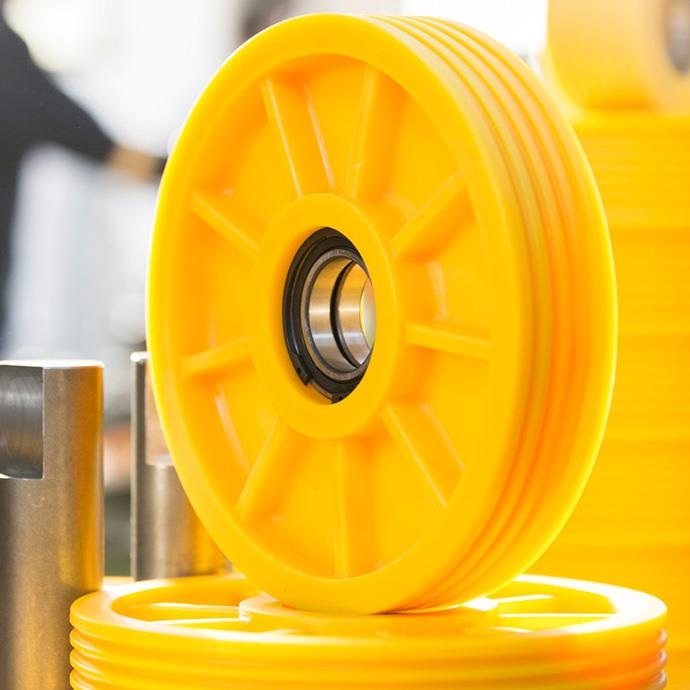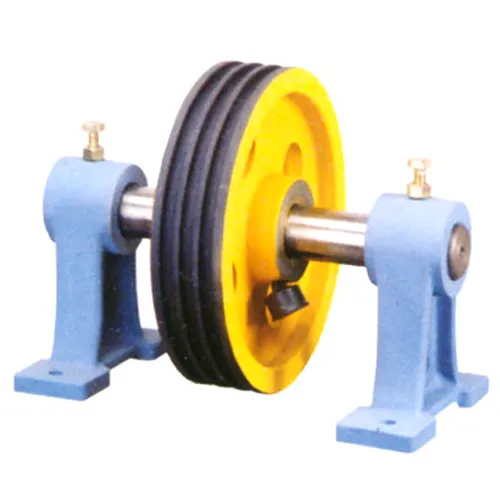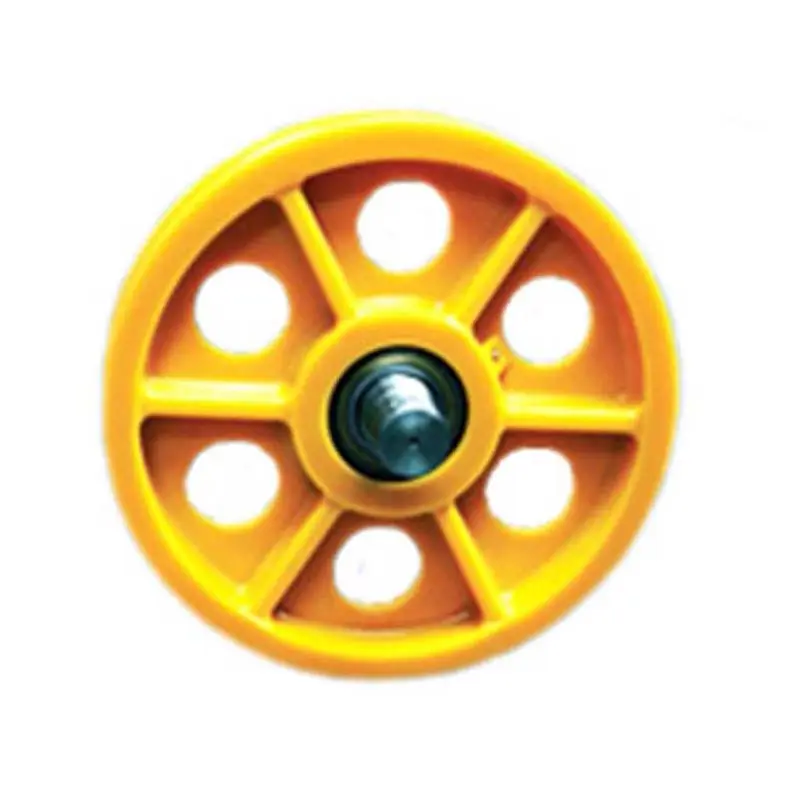Product Description
Specification:
| Product name | Stainless Steel 304 Bearing Pulley U/V Groove for Lifting Sliding Door Track Wheel |
| material | stainless steel |
| bearing | yes |
| color | original |
| Features | customized,low noise,easy installation,sliding smoothly,long life,customized,etc. |
| Application | industrial, door, window, and spare parts for other machines, etc. |
Product Display:
Company Profile:
FAQ:
Q: Are you the manufacturer?
A: Yes, we are a professional manufacturer focused on door and window roller pulleys for over 15 years.
Q: Do you offer free samples?
A: Yes, we are very glad to offer free samples for you to check the quality.
Q: Can we make our own color box?
A: Yes, if the order quantity reaches 1000 sets, we can make a customized color box for you.
Q: Can we print our logo on the products?
A: Yes, we can print your logo on the products according to your design.
Q: How does your factory do regarding quality control?
A: 80% of the staff has 10 years experience, a mature skilled technical team, and a complete quality management system to ensure high quality.
Q: What is the after-sale service for the sliding rollers?
A: We have online technical support. If it is a quality problem, we will replace the broken ones with new ones.
Q: How long is the production time?
A: For samples in stock, shipped in 2 days. if not in stock, the lead time is in 7 days. For mass production, the lead time is around 15 days after receiving the deposit payment.
Q: How about the shipment?
A: For small orders, we can ship them by DHL, FedEx, UPS, TNT, etc. For mass production orders, we can ship them by sea or by air.
| After-sales Service: | Online Support,Free Spare Parts |
|---|---|
| Warranty: | 3 Year |
| Certification: | TUV, CE, ISO |
| Splittable: | Unsplittable |
| Surface Treatment: | Other |
| Material: | Steel |
| Samples: |
US$ 0/Piece
1 Piece(Min.Order) | |
|---|
| Customization: |
Available
| Customized Request |
|---|
How do lifting pulleys contribute to the longevity and reliability of lifting equipment?
Lifting pulleys play a significant role in enhancing the longevity and reliability of lifting equipment. They contribute to the smooth functioning of the lifting system and help minimize wear and tear on various components. Here’s a detailed explanation of how lifting pulleys contribute to the longevity and reliability of lifting equipment:
1. Load Distribution: Lifting pulleys distribute the weight of the load evenly across the lifting system. By spreading the load over multiple ropes or cables, pulleys reduce the strain on individual components, such as cables, hooks, and attachments. This balanced load distribution minimizes the risk of overloading and premature failure of specific parts, thereby prolonging the lifespan of the lifting equipment.
2. Reduced Stress on Components: Lifting pulleys help to alleviate stress on various components of the lifting system. When lifting heavy loads, the force exerted on the cables or ropes can be substantial. By utilizing pulleys, the load is distributed across multiple ropes or cables, reducing the stress on each individual component. This reduction in stress helps prevent excessive stretching, bending, or breakage of cables, ensuring the reliability and longevity of the lifting equipment.
3. Efficient Force Transmission: Lifting pulleys facilitate efficient force transmission within the lifting system. As the load is distributed and redirected through the pulleys, the force is applied in a controlled and balanced manner. This efficient force transmission minimizes unnecessary strain on the lifting equipment and reduces the risk of sudden jerks or jolts that can cause damage or premature wear.
4. Improved Load Control: Lifting pulleys enable precise control over the lifting process, allowing operators to adjust the speed, direction, and position of the load with accuracy. This precise load control helps in preventing sudden or uncontrolled movements that can put stress on the lifting equipment. By ensuring smooth and controlled load handling, pulleys contribute to the longevity and reliability of the lifting equipment.
5. Reduction in Friction: Lifting pulleys are designed to minimize friction between the pulley and the ropes or cables. They often incorporate ball bearings or other low-friction mechanisms to ensure smooth rotation. By reducing friction, pulleys minimize wear on the ropes or cables, as well as on the pulley itself. This reduction in friction helps to extend the lifespan of the lifting equipment.
6. Protection Against Abrasion: Lifting pulleys can incorporate features such as protective coatings or linings to minimize abrasion and wear on the ropes or cables. These protective measures help prevent damage to the lifting equipment caused by repeated rubbing or contact with rough surfaces. By safeguarding against abrasion, pulleys contribute to the longevity and reliability of the lifting equipment.
7. Maintenance and Serviceability: Lifting pulleys are typically designed for easy maintenance and serviceability. They can be quickly inspected, lubricated, and replaced if necessary. Regular maintenance, including cleaning and lubrication of the pulleys, ensures their optimal performance and extends their lifespan. By facilitating routine maintenance, pulleys contribute to the overall reliability and longevity of the lifting equipment.
8. Compatibility and Interchangeability: Lifting pulleys are often designed to be compatible and interchangeable with various lifting systems and configurations. This compatibility allows for easy replacement or upgrading of pulleys as needed. Interchangeability ensures that pulleys can be seamlessly integrated into the existing lifting equipment, thereby extending its reliability and lifespan.
In conclusion, lifting pulleys play a crucial role in promoting the longevity and reliability of lifting equipment. Through load distribution, stress reduction, efficient force transmission, improved load control, friction reduction, protection against abrasion, maintenance and serviceability, as well as compatibility and interchangeability, pulleys contribute to the smooth functioning and extended lifespan of the lifting equipment.
What maintenance procedures are necessary to ensure the safe and reliable operation of lifting pulleys?
Proper maintenance procedures are essential to ensure the safe and reliable operation of lifting pulleys. Regular maintenance helps identify and address potential issues before they escalate, ensuring that the pulleys function optimally and minimize the risk of accidents or equipment failures. Here are some important maintenance procedures for lifting pulleys:
1. Inspection: Regular visual inspections of the pulleys should be conducted to check for any signs of damage, wear, or misalignment. Inspect the sheaves, bearings, mounting hardware, and other components for cracks, deformities, excessive wear, or corrosion. Look for any loose or missing parts that may affect the pulley’s performance.
2. Lubrication: Proper lubrication is crucial for the smooth operation of lifting pulleys. Follow the manufacturer’s recommendations regarding the type and frequency of lubrication. Apply lubricant to the bearings, sheaves, and other moving parts as required. Ensure that the pulleys are adequately lubricated to reduce friction and prevent premature wear.
3. Tension Adjustment: Check the tension of the lifting cable or rope regularly. The cable or rope should be properly tensioned to prevent slippage or excessive stress on the pulleys. Adjust the tension as needed according to the manufacturer’s guidelines or industry standards.
4. Cleaning: Keep the pulleys clean and free from dirt, debris, or contaminants that could interfere with their proper operation. Use a brush or compressed air to remove any buildup or foreign particles. Avoid using harsh chemicals or solvents that may damage the pulley’s components.
5. Replacement of Worn or Damaged Parts: If any component of the pulley, such as the sheaves, bearings, or mounting hardware, is worn, damaged, or showing signs of deterioration, it should be promptly replaced with suitable replacements recommended by the manufacturer. Use genuine parts to ensure compatibility and maintain the pulley’s performance.
6. Periodic Load Testing: Periodically conduct load testing of the lifting system to ensure the pulleys can handle the intended load capacity. Follow industry standards and guidelines for load testing procedures. This testing helps verify that the pulleys and associated components can safely support and lift the specified loads.
7. Training and Operator Awareness: Ensure that operators are trained in proper lifting procedures, including the use and maintenance of lifting pulleys. Educate them about the importance of regular maintenance, inspection, and safe operating practices. Encourage operators to report any abnormalities or concerns regarding the pulleys to the maintenance personnel or supervisor.
It is crucial to follow the manufacturer’s recommendations and guidelines for maintenance procedures specific to the lifting pulleys in use. Additionally, adhere to any applicable industry standards and regulations governing the maintenance of lifting equipment. By implementing regular maintenance procedures, operators can promote the safe and reliable operation of lifting pulleys, prolong their service life, and minimize the risk of accidents or equipment failures.
What types of materials are typically used in the manufacturing of lifting pulleys?
Lifting pulleys are manufactured using a variety of materials, depending on the specific application and desired characteristics. Here are some types of materials commonly used in the manufacturing of lifting pulleys:
1. Steel: Steel is one of the most widely used materials for lifting pulleys due to its excellent strength and durability. Different grades of steel, such as carbon steel or alloy steel, are used based on the required load capacity and environmental conditions. Steel pulleys are capable of handling heavy loads and are resistant to wear, making them suitable for demanding lifting applications.
2. Cast Iron: Cast iron is a popular material choice for lifting pulleys, especially for applications where weight and stability are important factors. Cast iron pulleys are known for their high strength, resistance to deformation, and ability to withstand heavy loads. They are commonly used in industrial settings and applications that require robust and long-lasting pulleys.
3. Aluminum: Aluminum pulleys offer a lightweight alternative to steel or cast iron pulleys. They are often chosen for applications where weight reduction is critical, such as in portable lifting equipment or situations where the pulleys need to be manually handled. Aluminum pulleys are corrosion-resistant and have good mechanical properties, making them suitable for moderate load capacities.
4. Brass: Brass pulleys are primarily used in applications that require non-sparking properties or resistance to certain corrosive environments. Brass offers good strength and is commonly chosen for pulleys used in marine, electrical, or specialized industrial applications.
5. Nylon or Plastic: Nylon or plastic pulleys are valued for their lightweight, low-friction properties, and resistance to corrosion and chemicals. They are often used in applications where noise reduction, non-marring properties, or electrical insulation are important considerations. Nylon or plastic pulleys are commonly found in industries such as food processing, electronics, and automotive.
6. Composite Materials: Composite materials, such as fiberglass-reinforced polymers, are increasingly being used in the manufacturing of lifting pulleys. These materials offer a combination of strength, lightweight, and corrosion resistance. Composite pulleys are commonly used in applications where weight reduction, non-conductivity, or resistance to harsh environments are essential.
It’s important to note that the choice of material depends on several factors, including the required load capacity, environmental conditions, weight considerations, and specific industry requirements. Manufacturers select the appropriate material to ensure that the lifting pulleys meet the necessary performance, durability, and safety standards for their intended applications.
In summary, lifting pulleys can be made from materials such as steel, cast iron, aluminum, brass, nylon or plastic, and composite materials. Each material offers unique properties that make it suitable for specific lifting applications.
editor by CX
2023-11-27




